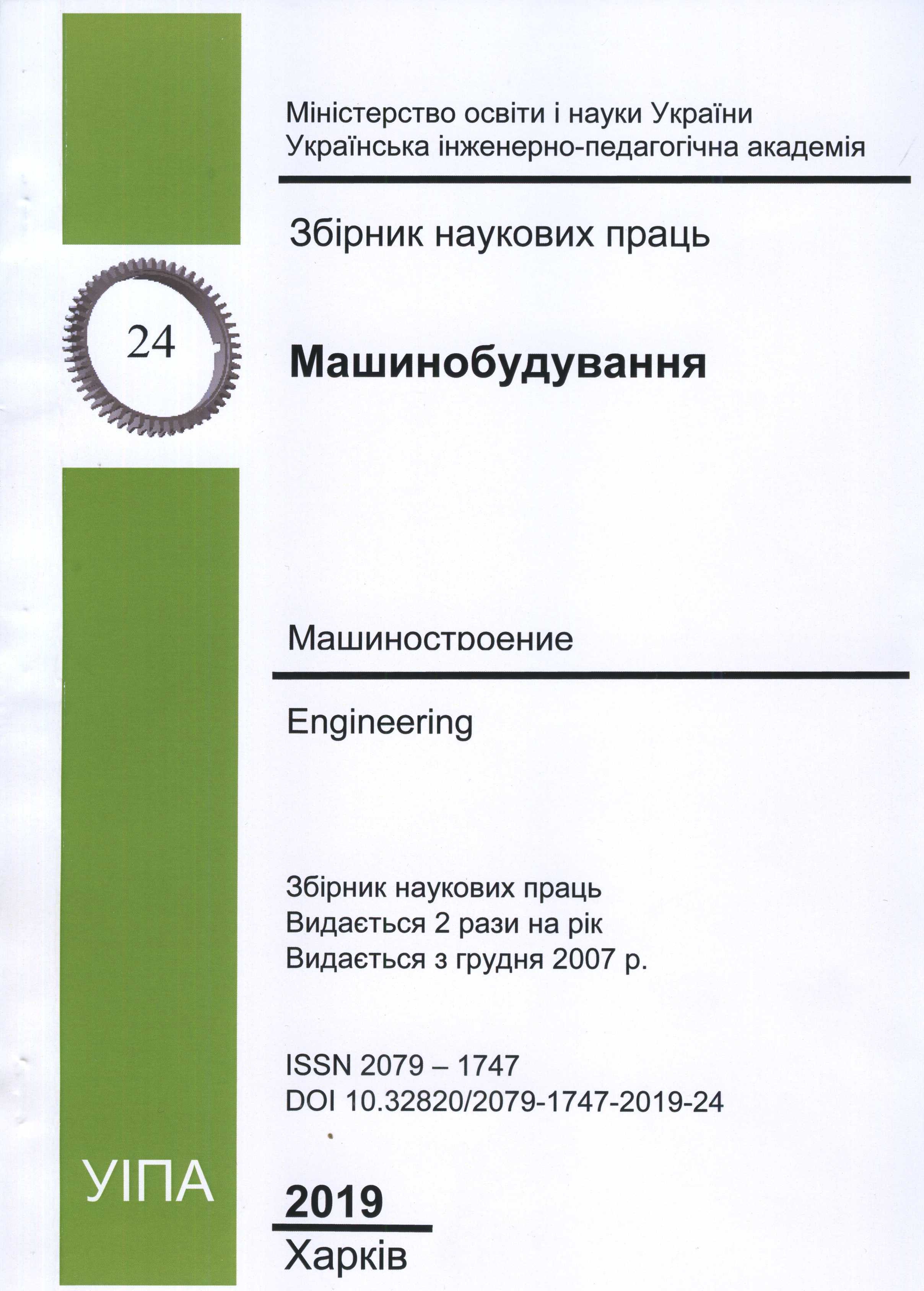Development of electrodes for surfacing the working part of a metal-cutting tool
Abstract
DOI: https://doi.org/10.32820/2079-1747-2019-24-66-73
The purpose of the work is to extend the service life of metal cutting tools by surfacing with alloyed electrodes W, C, B, Ti and rare-earth metals (REM), to increase the heat resistance and wear resistance of the cutting and stamping tools.
Electrodes were made from Sv-08A wire with rutile-fluorocarbon coating. Ferromanganese and ferrotitanium were used as deoxidants. Chromium, molybdenum and vanadium were introduced in the form of ferroalloys, and carbon in the form of silver graphite and silicon carbides, titanium and tungsten. In order to reduce the cost of electrodes, carbides W, Ti, Si, as well as cobalt were introduced into the charge of the coating in the form of waste from sharpening carbide tools from alloys T30K4, T15K6, VK8, etc.
The coating was applied to the rods by a press method. For research did surfacing size 80x20x20 mm.
The hardness of the deposited metal was checked on the surface of the eight-layer surfacing, made to control the chemical composition of the deposited metal.
The surfacing for hardening was carried out in a salt chlorobarium bath to a temperature of 1225 ° C. The exposure at this temperature was 20 min. Quenching was carried out in oil.
The study of the cutting properties of surfacing was carried out using the end turning method.
The №1 electrode is designed for wear-resistant surfacing of cutting edges of cut dies. Electrode No. 3 is intended for surfacing of edged dies.. №2 electrode for surfacing the working part of cutters and knives for metal cutting. The wear resistance of the cutters surfaced by the №2 electrode is not inferior to the cutters made of P6M5 steel. The resistance of the cut matrices from steel 45 with the proposed surfacing is 8-10 times higher compared to the matrices from 5XHM steel.
Downloads
References
Rybin, VV 1986, Bolshie plasticheskie deformacii i razrushenie metallov, Metallurgija, Moskva.
Kaljanov, VN & Bagrov, VA 1998, ‘Svarivaemost naplavljaemyh martensitnyh stalej s instrumentalnymi staljami’, Svarochnoe proizvodstvo, no. 4, pp. 14-15.
Rybakova, LM & Kuksenova, LI 1982, Struktura i iznosostojkost metalla, Mashinostroenie, Moskva.
Kaljanov, VN & Bagrov, VA 1998, ‘Vybor naplavochnyh materialov v zavisimosti ot vida iznosa’, Sostojanie i perspektivy razvitija svarochnyh materialov v stranah SNG, Moskva, pp. 173-175.
Tuttle, R 2012, ‘Effect of rare earth addition on grain refinement of plain carbon steels’, International Journal of Metalcasting, no. 1, pp. 51-63.
Liu, X, Yang, JC, Yang, L & Gao, XZ 2010, ‘Effect of Ce on inclusions and impact property of 2Cr13 stainless steel’, Journal of Iron and Steel Research International, no. 17, pp. 59-64.
Puzrjakov, AF 2003, Teoreticheskie osnovy tehnologii plazmennogo napylenija, Izdatelstvo Moskovskogo Gosudarstvennogo Tehnicheskogo Universiteta imeni N. Je. Baumana, Moskva.
Rusev, GM et al. 2000, ‘Tehnologija vosstanovlenija i uprochnenija naruzhnyh i vnutrennih poverhnostej plazmennym napyleniem’, Avtomaticheskaja svarka, no. 12, pp. 61-62.
Luzan, SO & Deriabkina, ES 2009, Sposib napyliuvannia hazotermichnoho poroshkovoho pokryttia, UA Patent 44994.
Poljanskij, AS, Luzan, SA & Derjabkina, ES 2011, ‘Obosnovanie vozmozhnosti podgotovki poverhnosti metallicheskimi shhetkami dlja gazotermicheskogo napylenija pokrytij’, Pratsi Tavriiskoho derzhavnoho ahrotekhnolohichnoho universytetu, Melitopol, iss. 11, vol. 1, pp. 34-42.
Robert Eriksson, " Thermal Barrier Coatings – Durability Assessment and Life Prediction," Linköping Studies in Science and Technology,Dissertation No.1527,August-2013.
S. Matthews and B. James, " Review of Thermal Spray Coating Applications in the Steel Industry:Part 1— Hardware in Steel Making to the Continuous Annealing Process," Journal of Thermal Spray Technology, Volume 19(6),December 2010,pp.1267.


